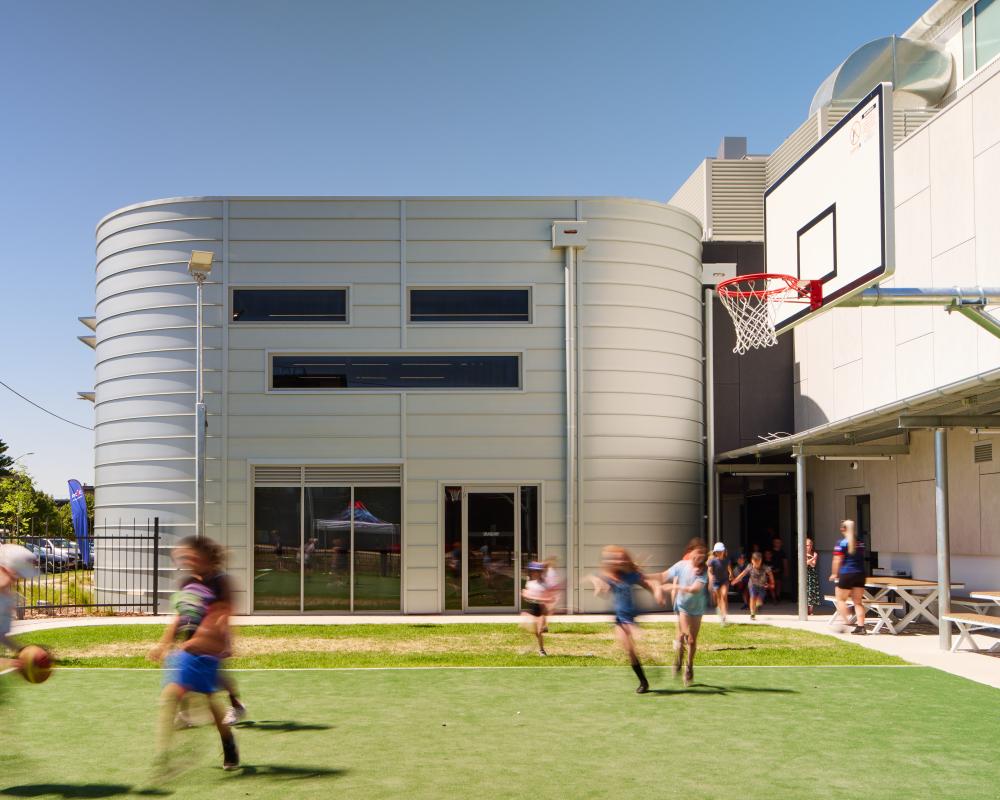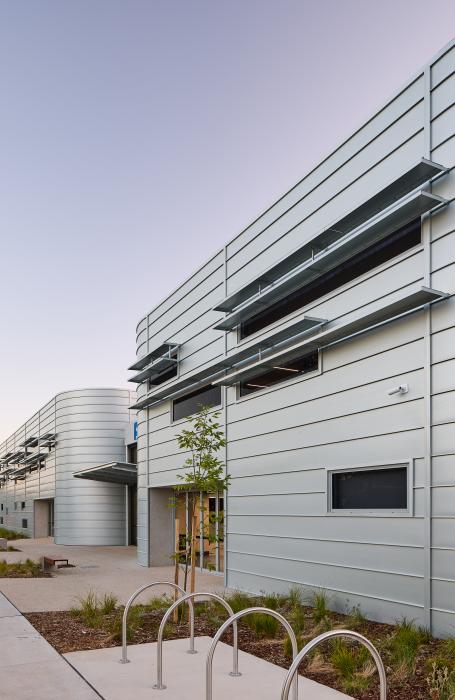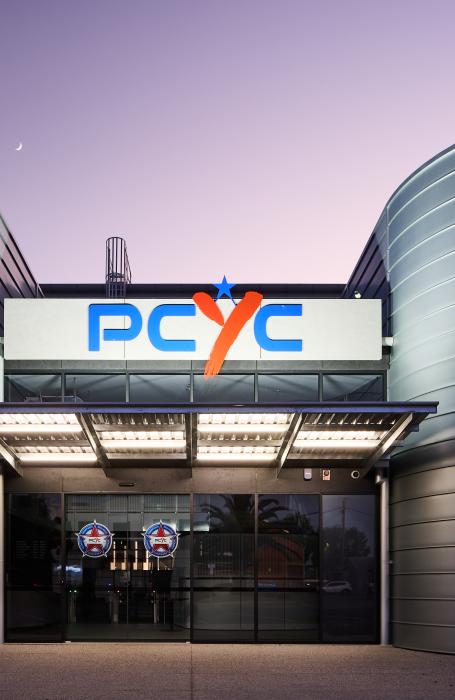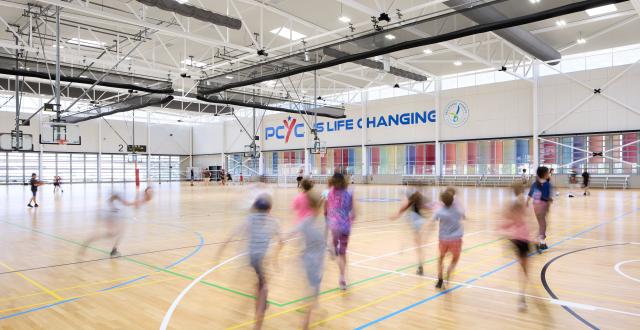Grain silos are a familiar site in the Riverina region of New South Wales, owing to the area’s rich agricultural roots and the continued importance of this sector to local employment.
Although the role of the grain silo is unashamedly functional in nature – to provide protection from the elements and to increase the storage life of the commodities within – it seems that they can also be a source of architectural inspiration.
In developing the new Police Citizens Youth Club (PCYC) Wagga Wagga, AJC Architects referenced elements from the local steel-clad silos that dot the landscape, drawing on the attractive curves of these unpretentious structures, along with their rugged ZINCALUME® steel finish.
Holding grain is one thing, bringing to life an 8,300m² centre that includes four full size multiuse sports courts, a naturally lit 3,200m² sports hall and studios for martial arts, boxing, dance and yoga is another. Plus throw in a café, conference and meeting rooms, an afterschool care centre and youth drop in hub, and there’s little doubt that AJC Architects earned their keep in designing these spaces while staying true to the original design inspiration.
Fortunately, modern building materials such as those available within the Fielders range can make the job a little easier, and since completion earlier this year, the $23M PCYC Wagga Wagga building has delivered on all fronts.

AJC Architects Studio Lead, Design, Michael Jones, explains the vision and inspiration of the building’s design and how Fielders Grandeur® standing seam was a natural choice as a key material.
“Upon traveling through Wiradjuri Country (Riverina, NSW), we were struck by the architectural presence of numerous large grain silos. It certainly was a design inspiration,” Michael said.
“While we were well familiar with the Fielders range, we hadn’t used Grandeur® previously, but it was an ideal material and helped meet this vision by enabling us to reproduce the horizontal banding and rounded corners. The metallic ZINCALUME® steel finish reflects the atmospheric conditions and time of day so beautifully.
“We designed a central glass entry between the two ‘silos’ and a set of details which enabled us to carry the external cladding material into the foyer and common areas of the interior. In this way the ‘silos’ are part of the architectural experience as you travel in and around the building.”

As well as offering generous flat pans and short, slim ribs that combine to deliver a clean and sophisticated appearance, Grandeur® is also suitable for curving, allowing important aspects of the silos’ cylindrical appearance to be replicated.
Michael said that the Fielders team played an important role in supporting AJC Architects to bring its project vision to light.
“The Fielders team were very helpful. We used a custom profile with 410mm cover. Innovatively, the profile was taken around curved corners; the first time this has been done in a horizontal installation,” he said.
“AJC worked with Fielders to overcome initial advice that the product couldn’t be curved in a ZINCALUME® steel finish as specified, due to the lubricant used to curve leaving an undesirable marking to the surface. Fielders undertook testing and were able to overcome the problem, and issued samples for our approval.”
According to Michael, other attractive qualities of Fielders Grandeur® was its sustainability and low maintenance benefits.
“We seek to minimise our reliance on imported materials and we always try to support local manufacturing. It’s important to us to ask questions and understand where materials come from – including the raw materials that are processed to become recognisable building elements,” Michael explained.

“The ZINCALUME® steel used to manufacture the Grandeur® cladding also exhibits exceptional corrosion and scratch resistance, and we hope that it will age in place with the grace that comes to natural materials. The material is easy to clean, will last a long time before needing replacement and doesn’t need to be re-painted.”
Michael said that the new facility was delivered within its required timeframe and is having a positive effect in the region.
“PCYC Wagga is a highly impactful building that is already changing lives in the community. Our frugal and sustainable approach meant the project was delivered on time and on budget, so that more time and money can now be spent where it’s needed – helping local kids get back on track,” he said.
“The club reports a substantial and positive affect on the local community and a huge increase in participation numbers across all programs. We’re proud to have contributed to this, and proud to partner with all the consultants, contractors and suppliers who together brought it to fruition.”






